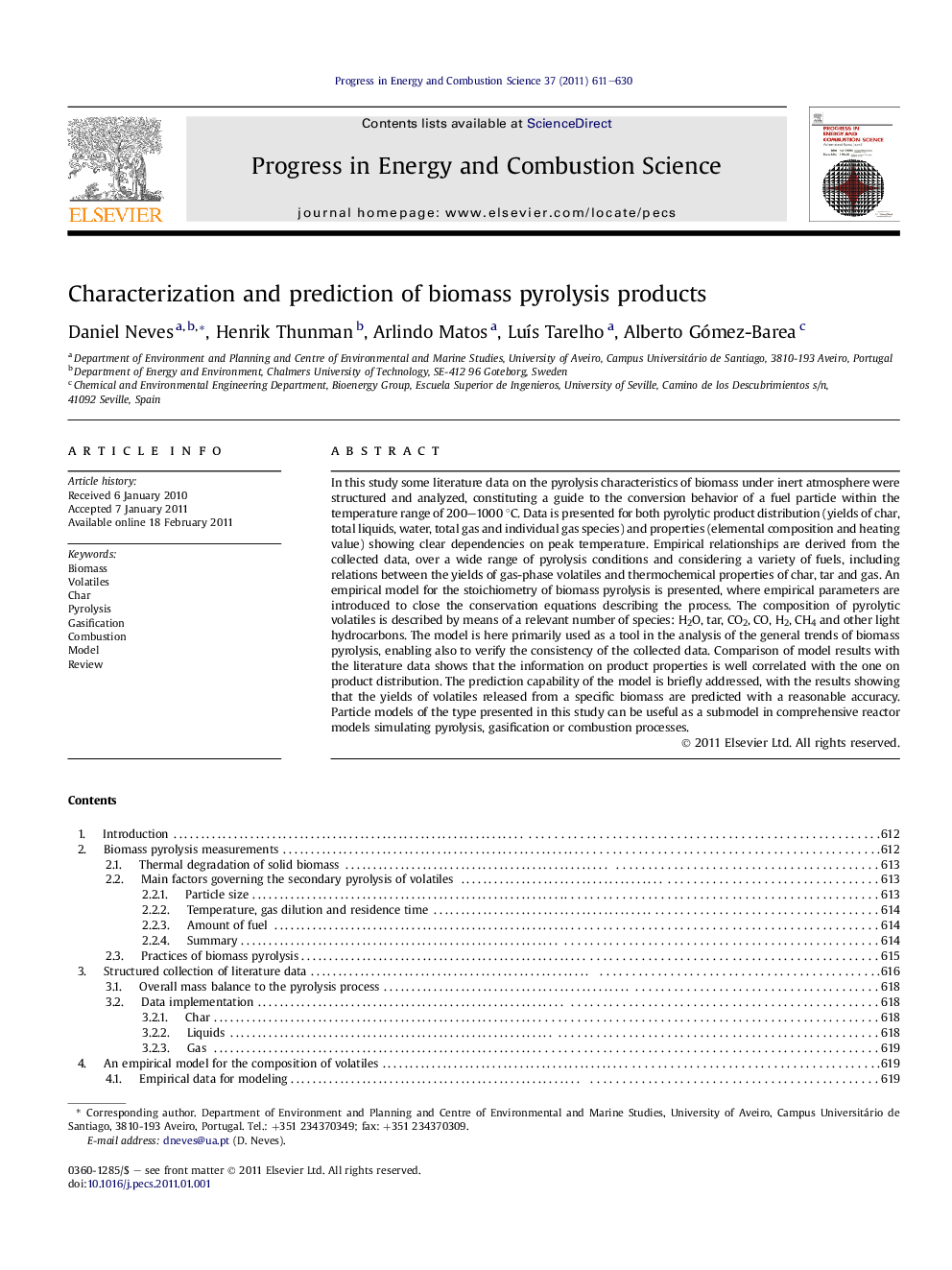| Article ID | Journal | Published Year | Pages | File Type |
|---|---|---|---|---|
| 241739 | Progress in Energy and Combustion Science | 2011 | 20 Pages |
In this study some literature data on the pyrolysis characteristics of biomass under inert atmosphere were structured and analyzed, constituting a guide to the conversion behavior of a fuel particle within the temperature range of 200–1000 °C. Data is presented for both pyrolytic product distribution (yields of char, total liquids, water, total gas and individual gas species) and properties (elemental composition and heating value) showing clear dependencies on peak temperature. Empirical relationships are derived from the collected data, over a wide range of pyrolysis conditions and considering a variety of fuels, including relations between the yields of gas-phase volatiles and thermochemical properties of char, tar and gas. An empirical model for the stoichiometry of biomass pyrolysis is presented, where empirical parameters are introduced to close the conservation equations describing the process. The composition of pyrolytic volatiles is described by means of a relevant number of species: H2O, tar, CO2, CO, H2, CH4 and other light hydrocarbons. The model is here primarily used as a tool in the analysis of the general trends of biomass pyrolysis, enabling also to verify the consistency of the collected data. Comparison of model results with the literature data shows that the information on product properties is well correlated with the one on product distribution. The prediction capability of the model is briefly addressed, with the results showing that the yields of volatiles released from a specific biomass are predicted with a reasonable accuracy. Particle models of the type presented in this study can be useful as a submodel in comprehensive reactor models simulating pyrolysis, gasification or combustion processes.
